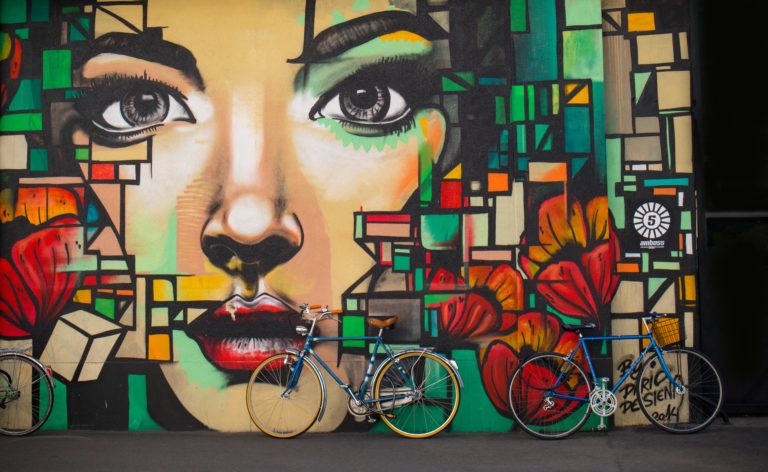Review of The Museum of Modern Love
Allen & Unwin. 2016. 305 pages.
In The Museum of Modern Love, Heather Rose gives insight into one of the biggest art exhibitions in New York City in recent history, and how we connect to art in its truest form.
Arky Levin is a film composer whose life is falling apart. His wife, who’s in the hospital, refuses to let Arky see her. His daughter wants nothing to do with him, and his composing days are numbered. Hollywood is looking towards new and younger composers and with that, Arky is losing inspiration in creating his own art.
In the Atrium at MOMA sits Marina Abramovic, from open till close, for 75 days. Or 750 hours if you want to be technical. It’s simply two wooden chairs placed at a table. The public is invited to sit with Marina if they wish, after waiting hours in line to meet her. The rules: no talking, no touching. Just look into each other’s eyes for however long you wish. Some stay for 20 minutes. Others for 2 hours.
Miserable and alone, Arky comes across Marina’s exhibition and is changed. Each and every day he finds himself coming back to MOMA. Not only to watch Marina, but the audience as well. Some audience members are skeptical, some dedicated enough to the artist that they camp out just to see her. Reactions differ from confused to mostly moved, even to tears.
Rose blends fiction and fact to create a world that experiences art in a way that puts the readers right there beside Arky. Feeling that you’re at the exhibit, you feel as if you’re waiting in line to meet Marina. Curiosity is a dominant feeling I had while reading, constantly turning the page. Like Arky, I wanted to know why an artist created this in the first place. Staring into the eyes of a stranger is awkward enough, but to do it for 75 days is another world of an idea. There’s an entrancing atmosphere surrounding Marina within each page describing her. Not knowing much of the artist, I came into the novel with a faint memory of the video snippet I saw of this exact exhibit. Still, the idea that these people were magically ‘changed’ after staring into Marina’s eyes made me wonder what power this, experiment shall we say, had.
The Museum of Modern Love also tells the stories of Arky’s friends, as well as a girl he meets at the exhibit. However, as a romantic, and a fan of the romance genre, the narrator clearly states that this is not a romance novel. This unique aspect made the book all the more real. Not everyone has a life with an ending that gets neatly tied up in a bow. In reality, most people don’t get that luxury, which is reflected within the story. Each character has their own very real and relatable problems – like marriage failures, insecurities and career goals— that make them interesting enough to learn about. Through including the stories of Arky’s friends, the novel gained a depth and roundedness to the plot that was not there before. Lives that encompassed Marina and the exhibit were fleshed out in situations outside of MOMA. Divided into seven relatively small parts, the book focuses on both specific people, and a progress in Arky’s life, illustrating how he’s changing over his visits to MOMA.
As a person who can appreciate art but is in no way an expert, it made me appreciate much more. In the beginning I thought this was, admittedly, a little weird. Granted, Marina’s style has an eagerness to be out of the ordinary. But Rose taps into the life of Marina and her more rebellious lifestyle. This insight gives an explanation to some of her more extreme (in comparison to traditional art) choices. Art has no form yet feels that you’re missing a piece to the puzzle. Although you get the process of the exhibit, you’re not physically there. Each person has their own individual experience that is extremely different from each other. So there’s no real answer to what is art, but allows for open interpretation. Like those who went to the exhibit, I questioned why this existed and what its purpose was. Being much like Arky, I found myself confused at the art but curious at the why and how this came about nonetheless.
Although the book circles around the life of Arky, you can’t help but question the life of Marina. I really wanted to get an insight into who she was and the history she’s had. She’s been under the critical eye of society for a while and her response is incredible. Marina is an artistic creature in the most intriguing way. Rose’s work had a strong validation to it. The story held the research and facts of the exhibit and Marina, whereas the plot held the fictional elements. The two blended well together and I never felt cheated of fact and fiction. Further validating her work, the end of the novel featured Rose’s acknowledgement and appreciation for all the real people that allowed her to place them in their true form in the novel, with the highest of compliments from Marina herself.
So imagine: bright lights zeroed in, hundreds of people looking, waiting for Marina. It’s just Marina, a table, and a chair. Thousands of eyes are fixated on this, on you. The empty chair is beckoning you to sit. Your life could be changed. Will you take it?

